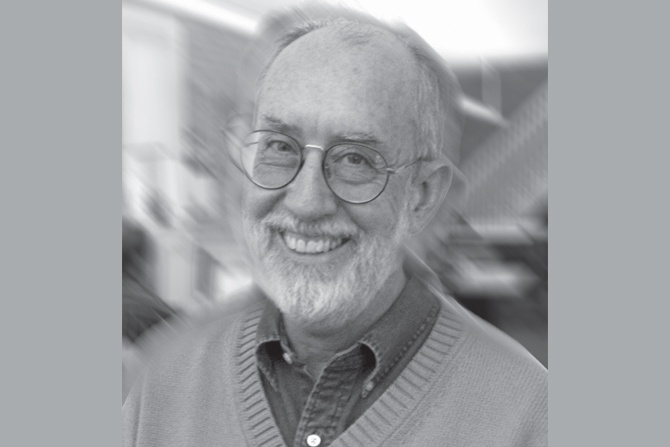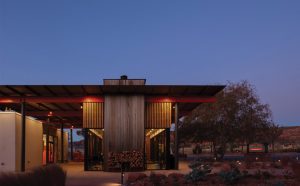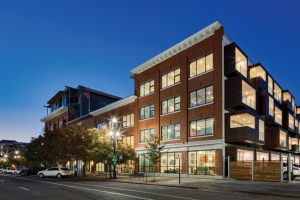Brixen and Christopher Architects was a well-respected firm from 1963 through 2015. Founded by Jim Christopher and Marty Brixen, the firm was known for its use of concrete and natural light. Myron Richardson joined the firm in the 1970s and, after Brixen’s retirement, became Jim Christopher’s partner and later the President of the firm. A gentle soul, Myron became the standard-bearer of Jim Christopher’s philosophy that architecture is about the people who inhabit it.
When did you decide to become an architect?
I was attending the University of Utah, and I was thinking I was going to be an engineer. And I didn’t like that, and I didn’t do very well in the math. I took a class in History of Architecture, and I was just fascinated.
So you enrolled in Architecture School and graduated, then what happened?
I enrolled in architecture school and graduated from the University of Utah in 1971. I was in the last group of people who got a Bachelor’s Degree in Architecture; five years of architecture, and we got a bachelor’s degree. Then I decided, I guess I better look for a job. I went to San Francisco because that is where I wanted to go and work. I spent a number of days looking up every architect I could find. Nobody had any work, and they were all telling me how they had just let X number of people go. So that didn’t go anywhere. I came back to Salt Lake City, and I decided there was only one firm in Salt Lake City that I would really like to work for, and that was Brixen and Christopher.
Why was that the case?
I loved the work that they did. I had been up to see Snowbird beginning to go together, and I had seen some of their other buildings, and I knew Jim Christopher because he taught a class at the University. I just decided I wanted to work for these guys. So I walked in there. No resume, nothing. I had some photographs of some projects I had done in school. I said, “I wanna work for you.”
And how did that go? It must have gone pretty well since you made a career of it.
It went quite interestingly. Jim Christopher said, “I’ll get back to you.” He talked to a friend, Stan Crawley, who taught Structures at the University of Utah. And Stan Crawley said, “Myron Richardson, he is a pain in the ass, but I think you should hire him.” That’s how I got the job. Brixen and Christopher is the only place I ever worked as an architect. I spent my entire career there, kind of working up through the ranks and eventually, I took over the place.
Tell us about Jim Christopher
Jim Christopher was one of the truly finest people I have ever known. He was nice, kind. He was dedicated. He believed in architecture, but he also believed in people. His theory he taught me: “Architecture is for people; buildings house human beings, and you should make the buildings good for the people who are in it, not just because you like it.” And that really stuck with me.
It just happened at one point Jim Christopher’s partner, Marty Brixen retired, and Jim — Chris, we all called him Chris — said, “You wanna be my partner?” And I said, “You bet.” As Chris got older and it became a bit harder for him to do everything, I took on more responsibility. And we always kept trying to make buildings more and more about the people who inhabited them.
The practice of architecture evolved from the time you started practicing through your retirement. Tell us what you saw happening with the clientele, the city.
When I first started in the early seventies, lots of people were still doing a kind of brutalism, internationalism type of work. That didn’t appeal a lot to me; it didn’t appeal a lot to Jim Christopher. I have been told by other architects that our buildings are not recognizable as Brixen and Christopher buildings. I take that as a huge compliment because they are not for us. The buildings we design are for the people who inhabit them. We worked on that constantly, be it homes or office buildings, or churches or whatever. It was a reflection of the people who used it and lived in it.
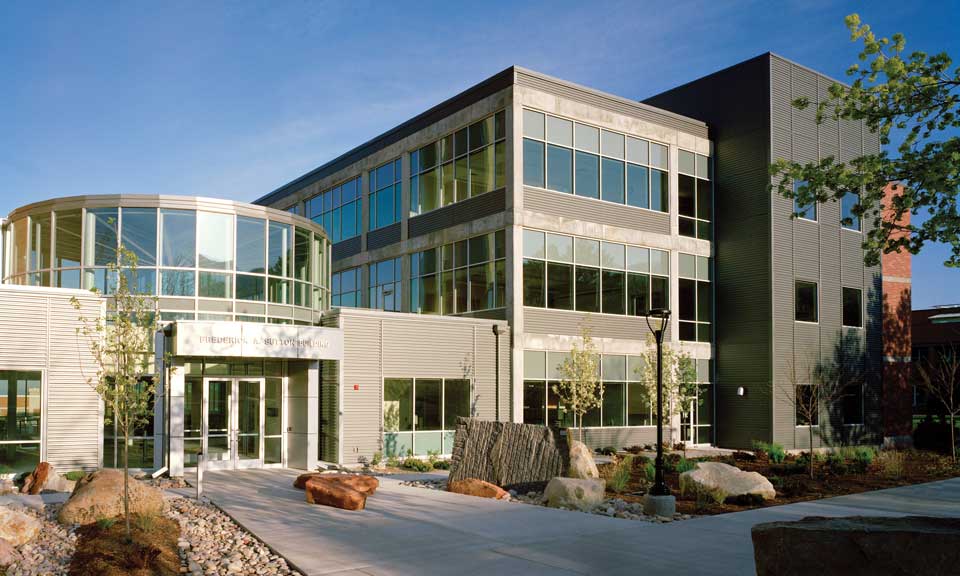
How has technology influenced the profession and design?
Technology has dramatically impacted the profession. I became an architect because I love to draw, and drawing on a computer is not very interesting. I kind of learned how, but I never did it. And I think that is a big change, and I think it has something to do with the buildings seeming to lack personality. It is very hard to draw something special on a computer; it wants to draw what it knows. It wants to lead you. I like the idea of taking a pencil, starting with a line and not knowing where it is going to end, and then you say, “Yeah, there.” Well, that is very difficult with a computer. I think the use of the computer, which is now pervasive, has really affected architecture. There was something about putting your hands on the paper and drawing the lines, and thinking about the people walking through the spaces. I think that is being lost.
The things like being ADA accessible and making it energy efficient used to come just as part of your design, as you did it. You thought about it — I will put the windows here, the door will be here, the roof will be like this, and I’ll have overhangs here and there. You did it without even thinking about it. You didn’t have a separate set of drawings that were the energy efficiency drawings.
What do you think makes a good building?
Its ability to last and still be good looking for a long time, not be trendy. I think it is buildings that look to be stable and look to belong there and that they are going to be there a long time. I would say that one of the absolute best buildings in the state of Utah is the Capitol. It is a beautifully designed building, it is well constructed, and it just looks like it belongs there forever. It is a wonderful building.
Other buildings you really admire?
I like the Walker Bank Building. There are some old buildings at the University of Utah and even some new ones that I am very fond of. I love the buildings on the Circle. I have always liked the medical residence towers at the University of Utah. I have always thought that those are a nice expression of modern architecture. There is the Beehive House, and there are the beautiful residences along South Temple, any one of which are absolutely terrific.
When you look back on your career, what things are you most proud of?
I am really proud that a great number of people who worked at our office went out and started their own offices and became successful architects. I made a list of all the architects that had become either partners or owners in major firms, and there were just tons of them that had been through our office. That’s kind of a nice feeling.
I am really very proud of the Sutton Geology and Geophysics Building at the University of Utah. I am proud of the little addition we made to the Emery Building on the Circle. It needed an elevator and some bathrooms and things like that added to it. And we didn’t want to stick just anything on this beautiful old building. We designed a freestanding building that was concrete, pulled it away from the old building and connected them with a walkway that was done on both sides in reflective glass; it appears that the old building just keeps on going right through there.
We did a lot of renovations that I felt good about because we brought back what was good about the buildings initially. The St. Mark’s Building — it’s hard to know that that building was even worked on, and that makes me very happy.
The synagogue — Kol Ami, but I am very proud of that building. We did a little building at Westminster College — Nunemaker Place — a very small building, it is very dramatic. It is right on the south side of campus, right by the stream. It was designed to be a building for students to just go and hang out, or to have small conferences or religious services; a number of people have been married there. It has dramatic acoustics. You have to be very careful if you play music there. Single instruments are wonderful there. If a band tries to play in there, it’s nuts because it has such dramatic acoustics due to all the angles.
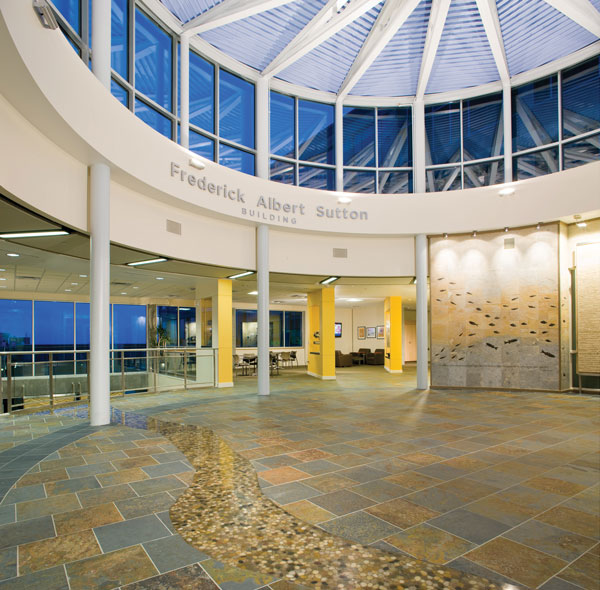
Think about the people. And if you are in it for the money, go find another job. I don’t think it’s a way to make money. I think it is a way to accomplish things and help people out, and you can make a decent living.
What about struggles?
I had a pretty fortunate career. I sometimes struggled when an employee was not working out. That was the hardest thing I had to do; let employees go. I felt so bad. I struggled with trying to learn the computer. I never became good at the computer. I would always work at it for a while and then pick up a pencil.
(Then) did you pass it on to others to do the CDs?
I said, “Here is what I would like it to look like. You put it on the computer.” But always, we always had the idea: if I told you to take something and put it on the computer, I also want you to add any ideas you have. If you think this doesn’t work and you have a better idea, put it in there. There is no prize for who gets the best ideas.
Working with clients?
Working with clients can be strange, but it can be so rewarding. I worked with geology people on the Sutton Building for probably five years: Master Plan, Programming, Preliminary Design, and then finally the real design. It was a long, long process but so enjoyable. I talked to every single professor in several departments, not just geology, but geophysics, and astrophysics, and weather and all of them. I liked just about all of them, and they liked me and the people who were with me. I think it made for a really good building. I have been up there relatively recently, and people would say, “Oh, these halls, it’s fun to walk up and down the halls in this building.” Wow, I don’t know if there is a better compliment that you can get as an architect: for people to say it is fun to walk up and down the halls.
Reflections on your career?
It’s a wonderful career. It’s not easy. School was very, very hard. Working up in the profession was quite hard. A lot of long nights.
What was hard about it?
All the work you have to do to get it right. “That’s not right.” And you do it over, and that’s not quite right. And you do it over. That is difficult. But in the end, you end up being happy with what you did. Learning how to work with other architects can be a struggle. But you have to be patient, and you have to listen to them, and not just always get your own way.
Any regrets?
I wish I would have been able to pass on the office (to someone). When we were ready to let it go, no one really wanted to take it over. I can only think of that as a failing on the part of me and my partner, Andrew, so that’s a regret.
Any advice you would give to younger architects?
Think about the people. And if you are in it for the money, go find another job. I don’t think it’s a way to make money. I think it is a way to accomplish things and help people out, and you can make a decent living. You are not poor when you are an architect. I would advise them: do things you can be proud of. The first project I ever had at Brixen and Christopher was a ticket kiosk on the Snowbird Plaza. I had only been there for six months, and I said, okay, and it worked out pretty well. I think young people should look for opportunities; don’t be too eager to redesign the world. Look for opportunities, and whenever you get it, if it is a little ticket kiosk — 10 feet by 10 feet, you make it the best thing you can make it.



